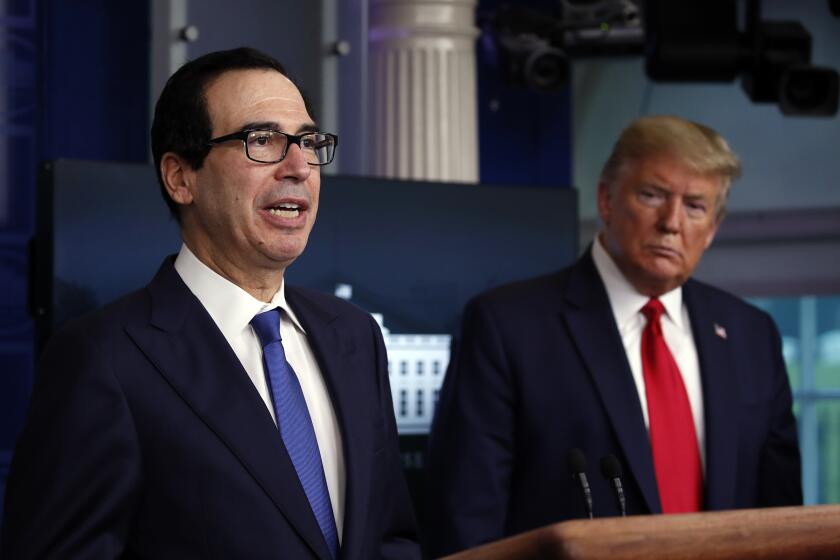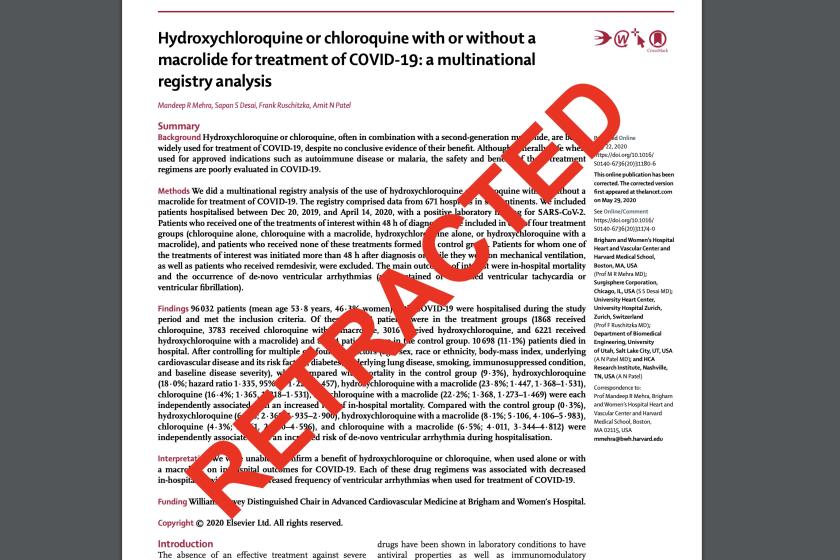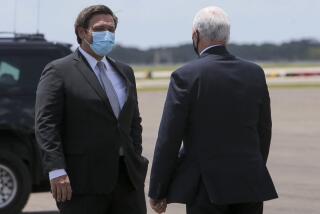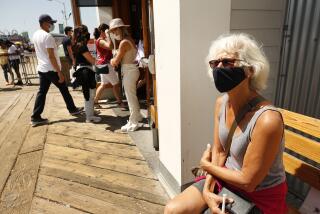Column: How the coronavirus has made chumps out of governors coast-to-coast
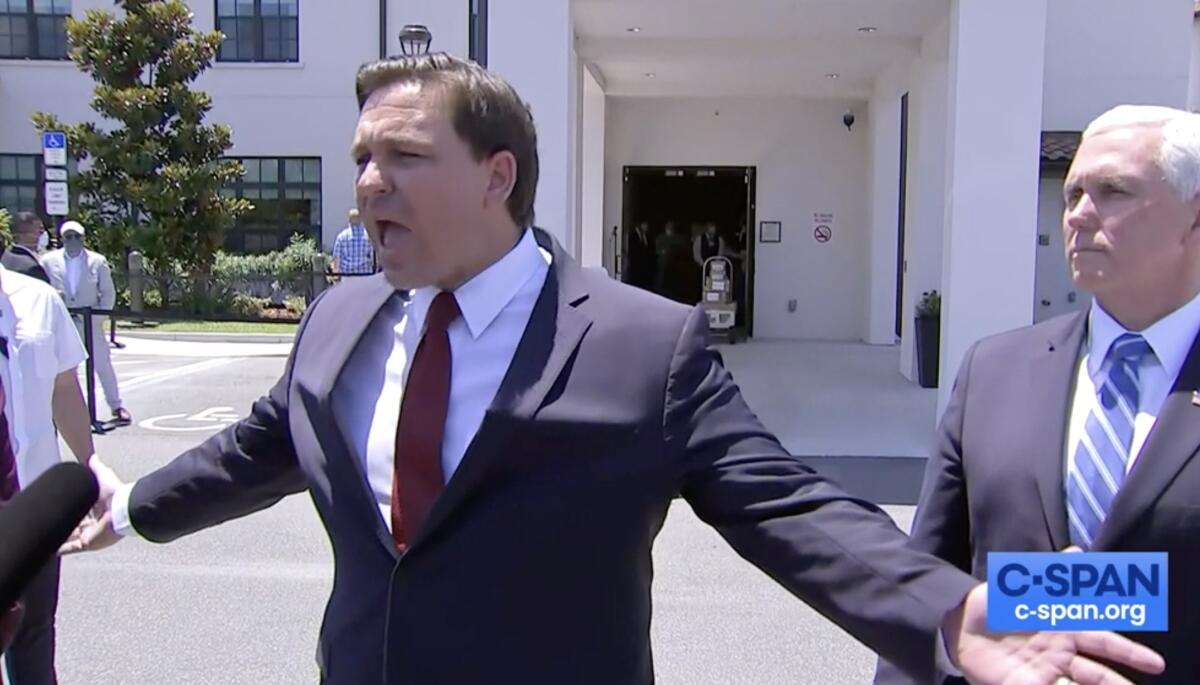
On May 20, during a joint press conference with Vice President Mike Pence, Florida Gov. Ron DeSantis launched a truculent defense of his management of the coronavirus pandemic in his state.
DeSantis groused about having been the target of a “typical partisan narrative” forecasting a surge in disease cases tied to a purportedly premature reopening of Florida by commercial businesses and recreation areas.
He complained that the media had “waxed poetic for weeks and weeks about how Florida was going to be just like New York.”
It’s spreading like wildfire.
— Rep. Greg Stanton, D-Ariz., about his state’s surge in COVID-19 cases
Instead, he said, Florida’s death rate was better than that of the Northeast, Midwest and other Southern states. “We’ve succeeded, and I think that people just don’t want to recognize it because it challenges their narrative.”
Not so fast, governor.
At 14 deaths per 100,000 residents, Florida ranks 26th in its death rate -- much better than New York’s nation-leading rate of 158 but about even with California and worse than Arkansas, Kansas, Kentucky and Texas -- according to the authoritative Johns Hopkins Coronavirus Resource Center.
The U.S. is suffering shutdown fatigue because the COVID-19 war has stagnated.
More to the point, Florida’s rate of positive COVID-19 tests has been rising steadily since mid-May; its seven-day moving average of positive tests rose to 5.6% this week -- and its one-day rate hit 8.3% -- compared with a seven-day average of 2.6% around the time of DeSantis’s display of braggadocio.
Over the last several days, Florida has reported a string of record highs in new coronavirus cases, including 2,783 new cases reported Tuesday. Whatever the state can claim, having “succeeded” in its battle with the pandemic isn’t high on the list.
DeSantis has pointed out that a preponderance of hospitalizations and deaths occurs among certain high-risk populations -- he mentioned prisons and nursing homes. That may be true, but it offers Floridians the false impression that everyone else is virtually immune; as long as they stay out of jail and nursing homes, they can party like it’s 2019.
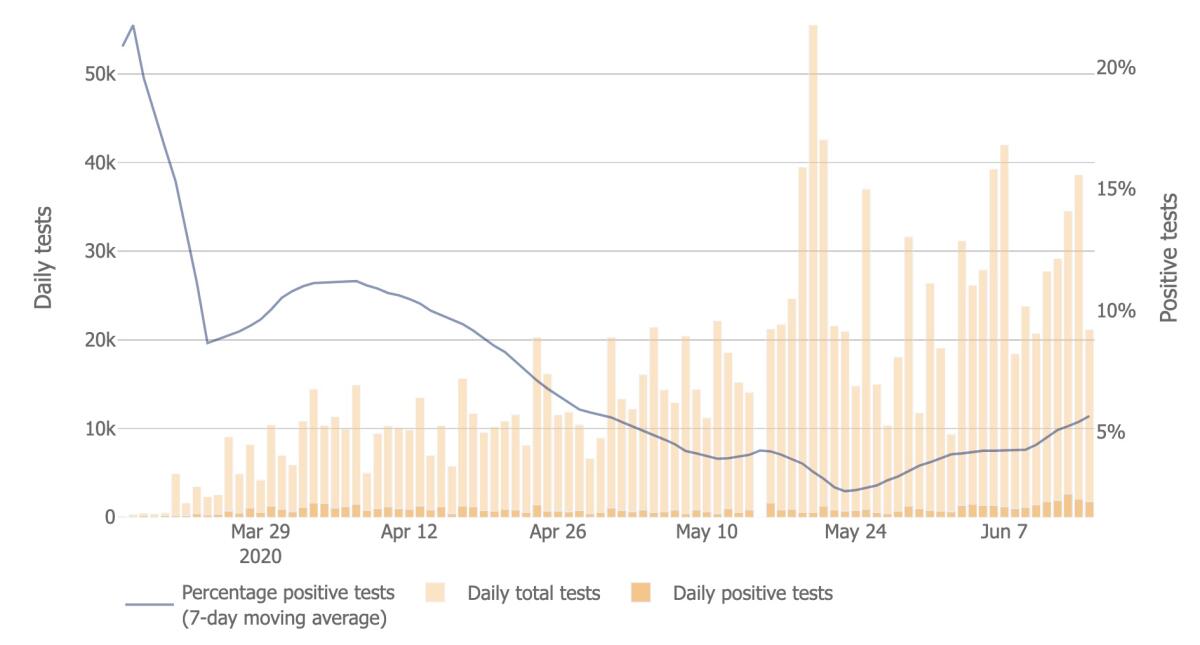
We don’t mean to pick on DeSantis. He’s not alone in standing accused of reopening his state too early. That’s a charge that can fairly be laid on more than a score of other governors, including California’s Gavin Newsom. California and Florida are both among 10 states that reached new highs for hospitalized patients over the weekend, according to a Washington Post database.
What the numbers do show, however, is that the novel coronavirus is winning almost everywhere in the country.
In part that’s a reflection of how political leaders from President Trump on down to the local level have turned sensible social measures such as wearing masks outdoors into partisan litmus tests or symbols of macho invulnerability, which reduce the public’s acceptance of those measures.
Trump and Congress have killed oversight of the federal coronavirus bailout.
As we’ve observed before, political leadership would have gone a long way toward encouraging Americans to accept rather more personal sacrifice in the interest of defeating the virus. But that leadership has been in short supply. For a uniquely opportunistic pathogen such as this virus, that political recklessness has been a godsend.
Matters have not been helped by efforts to paper over governmental shortcomings by withholding or distorting statistics.
Florida’s DeSantis is embroiled in one such controversy involving Rebekah Jones, a Health Department website manager who says she was fired for refusing to post inaccurate numbers on the state’s public web portal. Jones has since launched her own portal, which reports more dire figures than the state’s official site.
In early May, Arizona Gov. Doug Ducey, a Republican, dismantled a team of university experts who had developed a model projecting the course of infection in that state, given reopening scenarios. Their projections called on stay-at-home policies to remain in effect through the end of May, but Ducey launched a reopening on May 8.
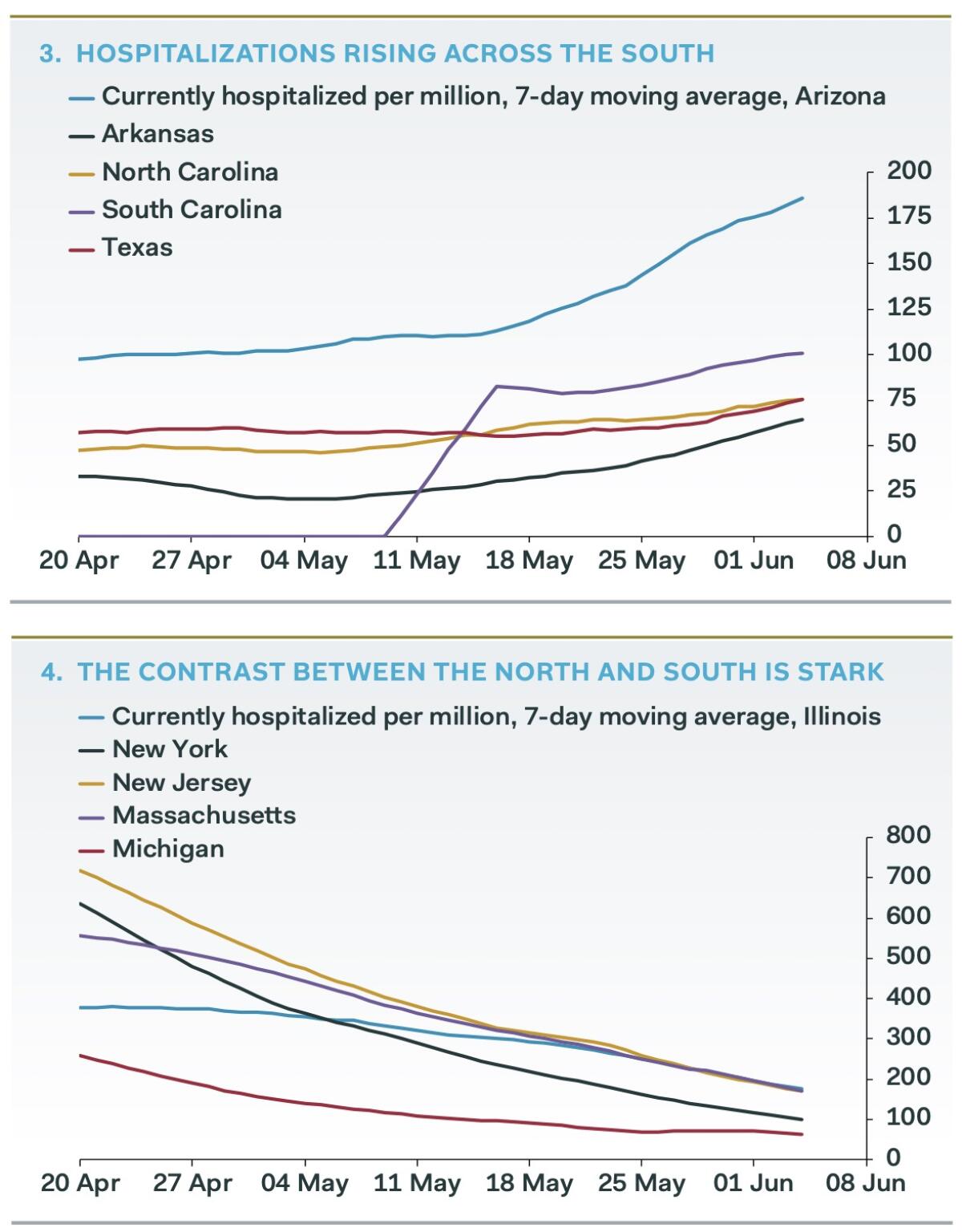
At the moment, Arizona is a leading hot-spot of coronavirus infection nationally. Its test positivity rate has soared to 12.7% from 7.7% just two weeks ago, its hospitals are warning of capacity overload, and Rep. Greg Stanton, a Democrat from the Phoenix area, says the state’s per capita infection rate is now more than three times higher than New York state’s.
“It’s spreading like wildfire,” Stanton tweeted. The state’s former health director, Will Humble, predicted that the trend would place Arizona on “a railroad track to field hospitals and/or another stay-at-home order.”
Ducey and DeSantis are following the lead of the Trump administration, which appears to think that the virus can be defeated by neglect and misdirection. In an op-ed for the Wall Street Journal appearing under his name Tuesday, Pence asserted that “the media has tried to scare the American people every step of the way” about the pandemic.
Except that government scientists have been warning about the scale of the disaster since January, and the authoritative Johns Hopkins coronavirus tracker places the number of U.S. deaths as of Wednesday at 116,963.
Pence reportedly urged governors on a conference call Monday to ascribe any increase in COVID-19 to “the magnitude of the increase in testing,” which isn’t the case in many states.
That’s Trump’s position. He tweeted Monday that “without testing, or weak testing, we would be showing almost no cases,” adding that testing “makes us look bad.”
Premature reopenings and relaxed behavior despite the coronavirus’s proven implacability aren’t restricted to red states. As my colleague Phil Willon reports, California Gov. Newsom, a Democrat, has ceded the decision on reopenings to county officials.
That’s despite clear indications that most counties are inclined to reopen despite failing to meet infection prevalence standards he established, and despite his having taken the lead in issuing the nation’s first stay-at-home to combat the coronavirus’s spread in mid-March.
Newsom’s action reflects political rather than epidemiological conditions: He’s reluctant to fight back against a loud clique demanding a relaxation of the rules even as polls show that most Americans still favor social distancing, practice it themselves and prefer a measured reopening over hasty and premature moves.
Major retractions on coronavirus research show something is rotten in scientific publishing
But he’s not alone in California. The Orange County Board of Supervisors cravenly capitulated last week by pressuring the county’s health officer to rescind a rule imposed by his predecessor, mandating the wearing of masks in public where social distancing wasn’t possible. The county replaced the mandate with a “strong recommendation” in favor of wearing masks.
The turnabout came after the prior health officer was hectored into resigning, even prompting the Sheriff’s Department to provide the officer with a security detail after she received an apparent death threat.
What the science indicates is that masks and other social distancing measures work to slow the spread of COVID-19. Political blustering and the manipulation of statistics don’t work. America is currently living through a halcyon moment in which it imagines that it has beaten the pandemic and things will get only better from here.
That sort of complacency is tantamount to tempting the virus gods. We have not won, and we are not in a “second wave.” We are still in the first wave, and the prospect is for it to get much worse.
More to Read
Inside the business of entertainment
The Wide Shot brings you news, analysis and insights on everything from streaming wars to production — and what it all means for the future.
You may occasionally receive promotional content from the Los Angeles Times.

